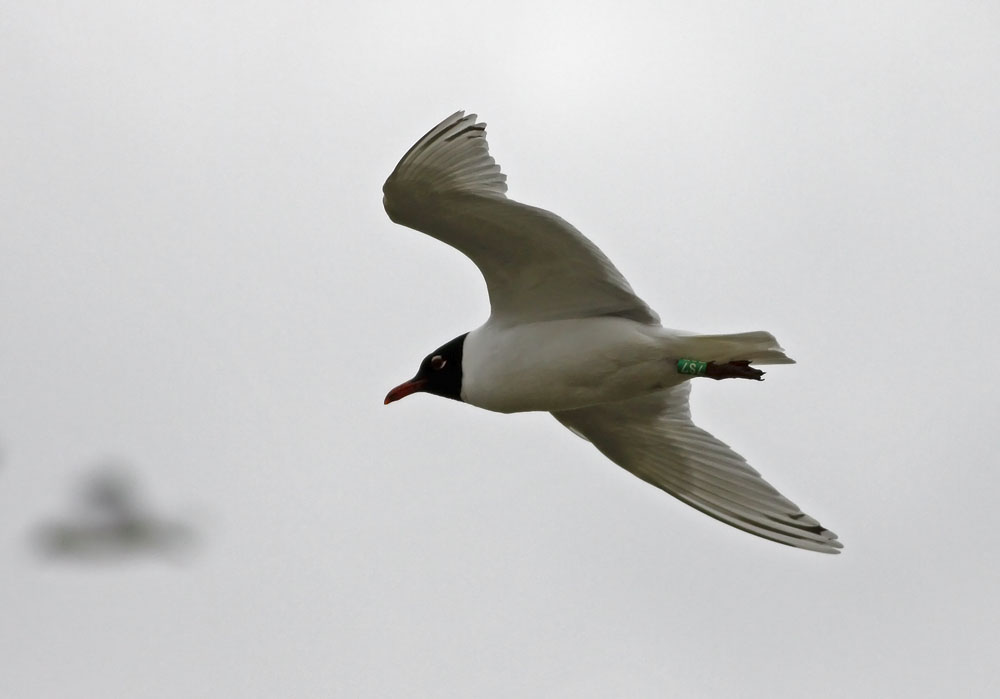 Gulls in Europe
Gulls in Europe
(last update: October 10, 2012)
Short index:
Mediterranean Gull 3cy 7S7 May 14 2011, Antwerpen, Belgium. Picture: Pim Wolf.
7S7 green 3cy in 2011.
The black pattern in the outer primaries is diagnostic for so-called "second winter" and "second summer" Mediterranean Gull (3cy birds by May). Normally, the bare part coloration is still not as intense coral red as in full adults. Here, the bill is rather orange-red with a dark sub-terminal band and an obvious reddish tip. The legs are still dark blackish-red, but may be dull red or more obvious orangey-red in some 3cy birds.
In the previous year, from May to September, a complete moult took place, into so-called "second winter" plumage. The mantle, scapulars, tertials and all the wing-coverts were replaced for plain pearl-grey feathers. The secondaries are completely white. The second generation primaries are pale pearly-grey, especially the inner primaries. The outer primaries show variable amount of black.
From February to April the body and head is moulted, bringing birds in so-called "second summer" plumage. Most noticeable is the replacement of head feathers: the head becomes darker with birds developing a full hood, some still show limited flecking. The white tips of the primaries become slightly worn. The colour of bare parts become adult-like, with the orbital ring and bill turning coral red, the bill often with a thin black bill-band. The legs are scarlet red. The iris turns deep reddish-brown.
